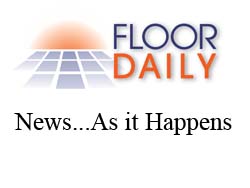Small Business Owners Cutting Capital Spending
Washington, DC, Dec. 11, 2008--Optimism at small businesses edged up slightly last month but owners remain discouraged about future prospects for hiring or spending, according to the National Federation of Independent Business index.
The index of small business optimism rose a marginal 0.3 points in November to 87.8.
"In this uncertain environment, owners are postponing any capital projects that are not essential to the operation of the firm, or that they can't afford or can't finance," said William Dunkelberg, NFIB chief economist.
There was a slight increase in the number of owners planning to make capital expenditures over the next few months: up two points to 21 percent; only in 1974-75 were capital spending plans lower.
During the next three months, few owners plan to create new jobs and the jobless rate will likely rise to 7.0 percent before the ends, the group said.
Job expansion plans were weak in all regions except in the West South Central states of Texas and Oklahoma where more firms planned to increase jobs than reduce jobs.
"All in all, a very poor environment for capital spending, lots of reasons for delay and no need for new inventory with sales falling," Dunkelberg said.
Not only are inventories tightening, owners continue to liquidate inventories with more firms cutting stocks than adding to them for the eighth straight month, the group said.
"Pricing power has vanished and reports of sales declines are at record high levels," Dunkelberg said. "Profits can't improve in this environment."
As the economy weakens, loan demand continues to decline, NIFB said. The credit worthiness of potential borrowers has also deteriorated over the last year, leading to more difficult terms and higher loan rejection rates, even with no change in lending standards.
"Overall, it appears that Main Street credit conditions have not worsened in proportion to the Wall Street experience and interest rates are falling, especially for those with variable rate loans," Dunkelberg said.
"This means borrowers have more to spend, although dollar for dollar, savers have less," Dunkelberg said.
